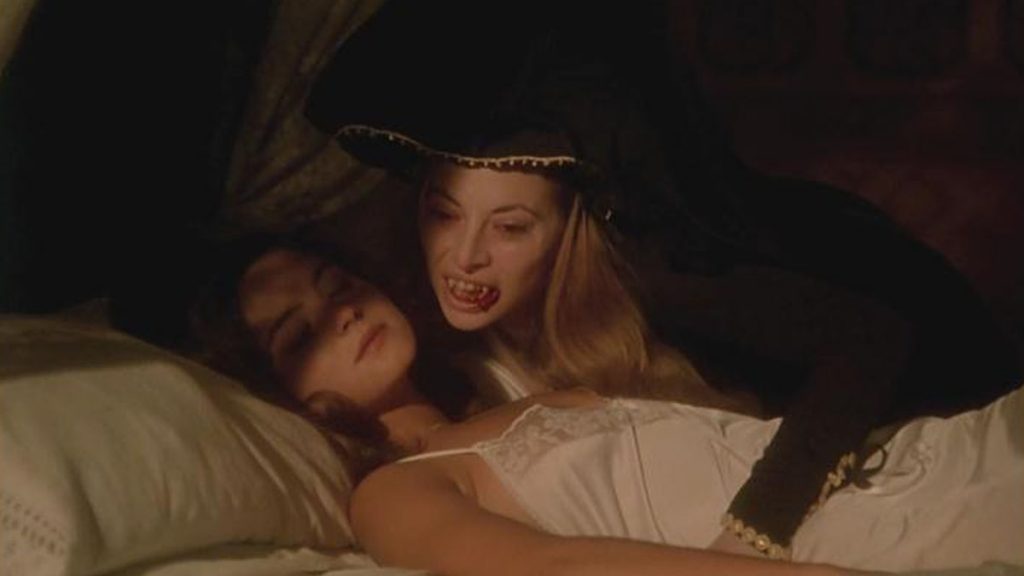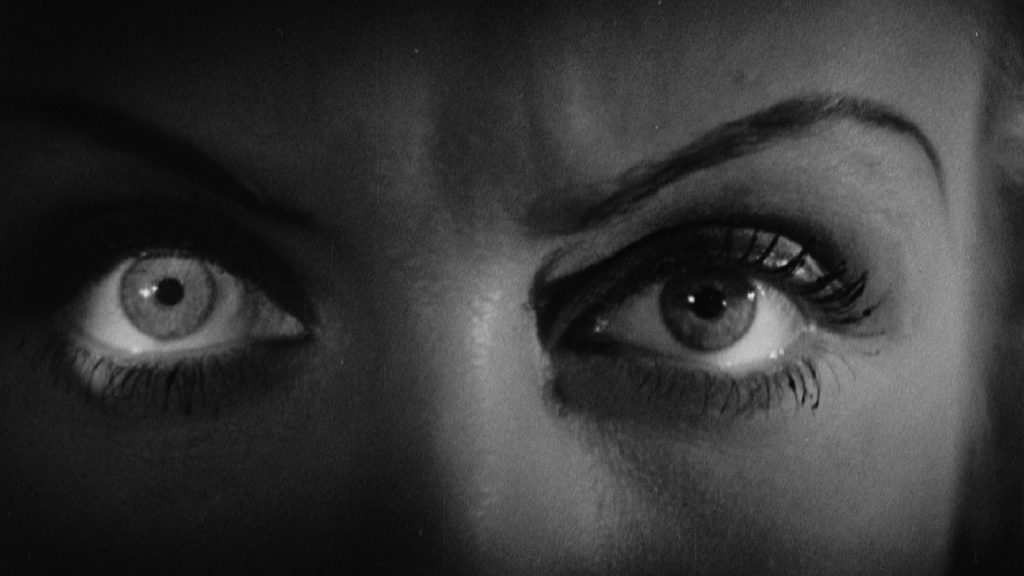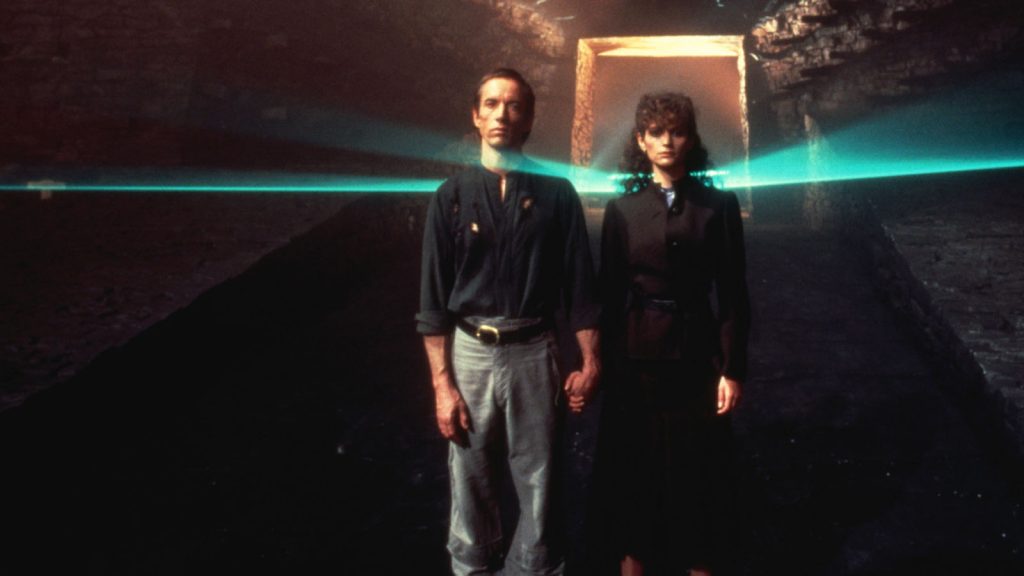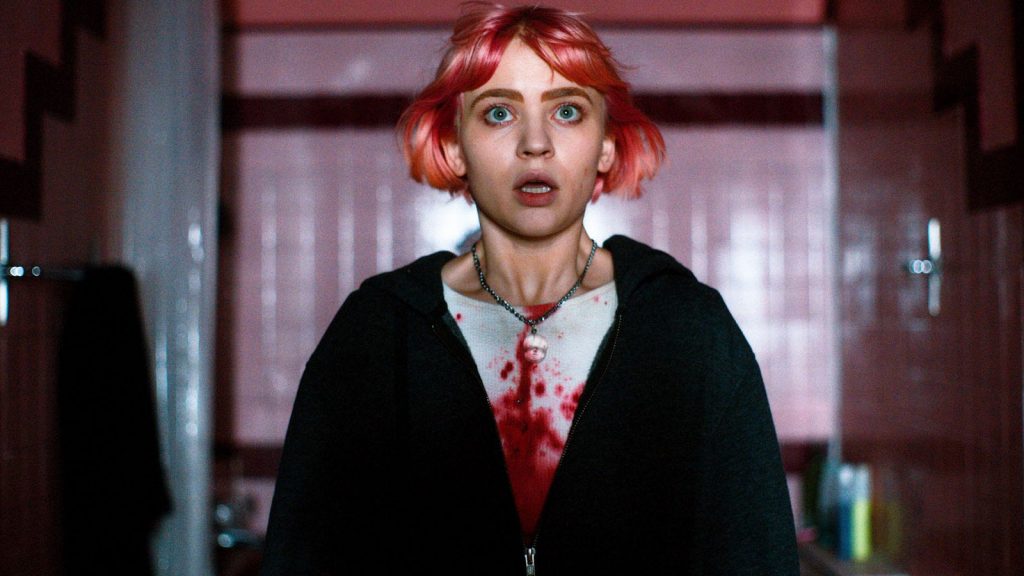Waldemar Daninsky. The name is a trochaic delight, a complete poem—I could walk around all day saying those words, which roll off the tongue like “Candyman.” Waldemar Daninsky, the lycanthropic Polish nobleman, was the creation of Spanish screenwriter Paul Naschy (also credited as Jacinto Molina, his real name), who portrayed him in 12 films, each narratively discontinuous and repeating the same formula whereby a quiet, penitent wolf man wants only to fall in love with a woman who will put him out of his misery. He chooses the blandest, least developed female character in the ensemble, canoodles with her a while, and in one last act of bravery, saves her from a less conflicted member of the bestiary: a vampire, a zombie, an extraterrestrial, and, most entertainingly, a yeti. Then his lover kills him with whatever silver is close at hand. By the time Naschy made Night of the Werewolf (1981), a late entry in the cycle and the first that he directed himself, the blend had aged into a fine bloody Rioja, not complex but deeply satisfying. He grabs everything from the pantry—Universal creature transformation, Hammer Gothic, and Eurohorror eroticism, producing something that is gory but sincere, a kind of Spanish folk art, delivered without irony and with a child’s delight in monsters.
When a Spanish artist says something was “surrealist,” I believe him. That was the word Naschy used in his memoirs to describe the monster fight at the end of Frankenstein Meets the Wolf Man (1943), the unlikely film that inspired him to make movies. In that scene, Frankenstein’s monster (Bela Lugosi) and the wolf man Larry Talbot (Lon Chaney Jr) wrestle with each other in the laboratory beneath a Gothic castle. The apocalyptic finale in which monsters are pitted against each other and then drowned in a dam explosion must have made a big impression on young Jacinto Molina, who grew up in Spain and began working in the 1960s under the strict authoritarian regime of General Franco. A politically repressed nation is bound to have vivid nightmares (see Pan’s Labyrinth), and Molina as Naschy expressed his in an energetic explosion of surreal, doomed fairy tales in which the medieval past never left and a Gothic church full of vampires and their zombie slaves was only a short car ride away. He originally intended his stories to be set in Spain, so we can lay some of the blame for the weird mix of geography and time periods at the feet of the Catholic censors who examined every domestic script before production. They weren’t having any Spanish werewolves, and sex and gore were fine as long as they were made for export. Hence the shifting production locations, different domestic and international cuts, and the bewildering number of alternate titles attached to Paul Naschy films.

Night of the Werewolf, the first post-Franco Daninsky film, follows the pattern of his other scripts but is told with more freedom and a bigger budget. In the medieval opening, Elizabeth Báthory, played by the enthralling Julia Saly, is being condemned for vampirism along with her servant Daninsky, who, unlike her, is awfully sorry for all the people he’s killed. Cut to the present: two sexy scientists are lounging poolside, smoking, and trying to ditch a couple of obnoxious Italian men who accuse their friend Erika (Silvia Aguilar) of being a witch. Erika is a witch—she wants to resurrect Báthory in pursuit of some unexplained power, and she will slit her friends’ throats because that’s what it takes. The three women journey together to Báthory’s crypt, encountering Daninsky along the way, himself resurrected. The aforementioned half-developed Karin (Azucena Hernández) falls for the wolf man, and what follows is a pulp version of Jean Cocteau’s Beauty and the Beast (1946), with all of the earnestness and dream but with more blood and more fog.
An actor I admire once chastised me for overwriting and handed me back some bit of dialogue I’d contrived: “I’ll say it with a look.” And by God, he did. Paul Naschy knows this lesson deep in his bones. His movies are full of dewy-eyed actor close-ups and monsters floating through the mist, their scary facial expressions frozen in the moments before or after an attack. Character psychology is left on the table as we are encouraged to stop and kneel in silence before these icons. Witness, for example, the weirdly devotional scene in which Báthory showers in the blood of her victim. Naschy, a competitive weightlifter, alternates these contemplative moments with eruptions of a psychotic male physicality that channels his inner Larry Talbot, in sequences that are especially effective after so many quiet shots of him doing the moody broody. His charisma and commitment to the iconography are what make his work so endearing.
Night of the Werewolf didn’t stand a chance in 1981. Americans were already howling in Los Angeles and werewolfing in London. Who needs a lap dissolve when you have practical-effects wizards Rob Bottin and Rick Baker, not to mention a fresh batch of horror writers and directors who seasoned their love for the genre with a gobbet of irony? At one point, a distributor changed its title to The Craving in an act of mad desperation. Dismissed by critics at home and abroad, Paul Naschy was loved by audiences in Spain—as we should love him now. His last great work is a melancholy farewell to a certain brand of atmospheric Eurohorror. Waldemar Daninsky. Say the name again. It still has power.

a writer living outside Philadelphia, is currently working on a horror project set in western Pennsylvania. He co-wrote the movie Anamorph, starring Willem Dafoe.
Despite all the Universal, Toho, and Hammer monster movies I’d been introduced to on Channel 48’s Creature Double Feature, nothing had prepared me...
BY HENRY MILLER | February 1, 2022
If you want to have some fun with your fellow horror film aficionados, ask them what they’d rate as the single most effective scene for mood and atmosphere in any...
BY COLIN FLEMING | November 6, 2025
The first inkling I ever had of The Howling was hearing the opening notes of Pino Donaggio’s score sampled in the Primal Scream song “Pills,” produced by Dan the Automator. When I finally saw the movie years later...
BY LAURA WYNNE | November 5, 2024

This pre-Code offering packs a lot of story into its typically brisk running time, with several plot threads weaving together a (not always successful) tapestry of spooky and criminal doings.
READ MORE >
BY ANN OLSSON | Month 00, 2021

In what could be the fastest-resulting rape revenge movie, a drunken lout brutally forces himself on Ida, the young woman who doesn't return his affections, during a party over Labor Day.
READ MORE >
BY LAURA KERN | Month 00, 2021

Beast is a lot of movies in one package - fractured fairy tale, belated-coming-of-age story, psychological drama, regional horror film - but above all it's a calling card for its leading lady, Jessie Buckley.
READ MORE >
BY LAURA KERN | Month 00, 2021